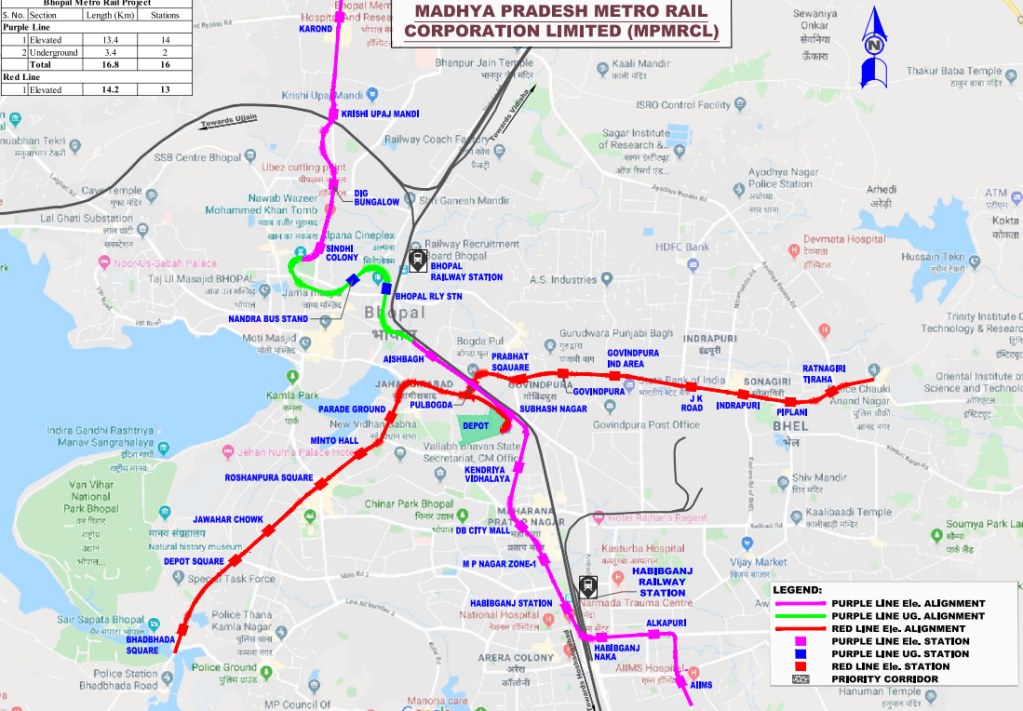By Dr. Kavita Dehalwar & Shashikant Nishant Sharma
Bhopal, the capital city of Madhya Pradesh, India, has undergone significant transformations in its public transport system over the years. The city’s bus transit systems, in particular, have become a critical component of urban mobility, aiming to provide efficient, affordable, and sustainable transport solutions to its residents. This article provides a detailed exploration of the bus transit systems in Bhopal, examining their structure, effectiveness, and the level of user satisfaction, with reference to recent academic research.

Overview of Bhopal’s Bus Transit System
Bhopal’s bus transit system is spearheaded by the Bhopal City Link Limited (BCLL), which operates under the brand name ‘MyBus’. Launched in 2006, ‘MyBus’ operates a fleet of buses intended to serve all major routes across the city. The system was designed to reduce congestion, improve air quality, and provide a reliable alternative to private vehicle use.
In addition to regular buses, Bhopal has also introduced Bus Rapid Transit System (BRTS), known locally as the Bhopal BRTS, which began operations in 2013. This system features dedicated corridors for buses, aiming to ensure faster travel times by avoiding the usual traffic congestion on roads.
Infrastructure and Technology
The Bhopal bus transit system features modern infrastructure that includes well-designed bus stops equipped with real-time information systems. The BRTS corridors are specially engineered with elevated and at-grade sections that separate buses from general traffic, thereby increasing efficiency and punctuality.
Technological enhancements have been integrated into the system, such as GPS tracking of buses and automated ticketing systems. These technologies facilitate ease of use and improve passenger experiences by providing accurate information on bus timings and routes.
Assessment of Satisfaction Levels
A critical assessment by Jaiswal, A., Rokade, S., Vijay, N.C. (2024) in their study titled “Assessment of Satisfaction Level for Bus Transit Systems in Bhopal” found varied satisfaction levels among users of the city’s bus transit system. Published in the Springer series Lecture Notes in Civil Engineering, their research evaluates several parameters that influence user satisfaction, including comfort, safety, frequency of buses, and accessibility of bus stops (Jaiswal et al., 2024).
Their findings indicate that while there are areas of strength, such as the availability of buses during peak hours, there are also significant areas for improvement, especially in terms of bus maintenance and service consistency. The study highlights the need for regular monitoring and upgrades to keep up with the growing demand and to ensure sustainable operations.
Challenges and Opportunities
Despite the advancements and the positive impact on urban mobility, Bhopal’s bus transit system faces several challenges. These include operational inefficiencies, financial sustainability issues, and the need for continuous improvement in customer service. Moreover, the increasing population of the city calls for an expansion of the bus network to cover newer areas and to handle greater passenger loads.
The opportunities for improvement align closely with the challenges. There is potential for expansion of the BRTS network, which could significantly improve the overall efficiency of public transport in Bhopal. Additionally, incorporating more eco-friendly buses, such as electric or hybrid models, could address environmental concerns and enhance the sustainability of the transit system.
Conclusion
Bhopal’s bus transit system plays an essential role in shaping the city’s transport landscape. With ongoing assessments and feedback mechanisms, such as the study conducted by Jaiswal et al. (2024), the system can continue to evolve and adapt to the needs of its users. The future of urban mobility in Bhopal appears promising, with continued investments in infrastructure, technology, and service quality poised to enhance the efficacy and popularity of its bus transit networks.
References
Chaurasia, D. (2014). Bus rapid transit system (BRTS): A sustainable way of city transport (Case Study of Bhopal BRTS). International Journal of Engineering and Advanced Technology (IJEAT) ISSN, 2249, 8958.
Dehawar, K. The Harsh Reality of Slum Life in Bhopal: A Closer Look at Poor Living Conditions.
Gurjar, J., Agarwal, P. K., & Jain, P. K. (2020). A comprehensive methodology for comparative performance evaluation of public transport systems in urban areas. Transportation Research Procedia, 48, 3508-3531.
Jaiswal, A., Rokade, S., Vijay, N.C. (2024). Assessment of Satisfaction Level for Bus Transit Systems in Bhopal. In: Singh, D., Maji, A., Karmarkar, O., Gupta, M., Velaga, N.R., Debbarma, S. (eds) Transportation Research. TPMDC 2022. Lecture Notes in Civil Engineering, vol 434. Springer, Singapore. https://doi.org/10.1007/978-981-99-6090-3_35.
Jaiswal, A., Jain, G., & Goswami, S. Assessment of Satisfaction Level for Existing Public Transport Systems using Machine Learning: A Case of Bhopal (India).
LODHI, A. S., & SHARMA, S. N. Framework for Road Safety Improvement Measures for Madhya Pradesh.
Saxena, A., Gupta, V., & Shrivastava, B. (2021). An assessment of public transport accessibility levels for slums in Bhopal. City, 1000, 9.
Sharma, S. N., Kumar, A., & Dehalwar, K. (2024). The Precursors of Transit-oriented Development. Economic and Political Weekly, 59(14), 16-20.
Singh, A. P., Singh, V., Sharma, A. K., & Sharma, A. Review of Public Transit Services in the State Capital Bhopal.




You must be logged in to post a comment.